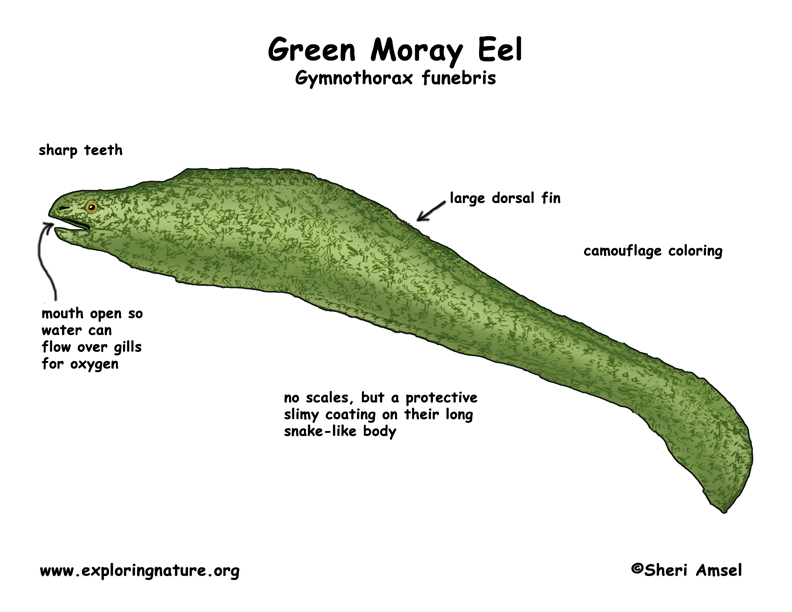

They are found in warm coastal waters through the world's oceans.
They live on coral reefs, often hiding in rocky cracks and holes.
They have no scales, but have a protective slimy coating on their long snake-like body. They are often camouflaged. They have tiny eyes and don't see that well. They keep their mouths open so that water flows over their gills to give them oxygen. They have sharp teeth. They have one very long fin along their back all the way down their tail. They can reach 5 feet long.
These are active at night (nocturnal). They hide in rocks and wait for prey to cross their path.
They eat fish, other eels, octopi and squid.
Male and female moray eels dance around each other. Then the female releases her eggs and the male releases his sperm into the water. Babies are see-through and tiny.
Kingdom: Animalia
Phylum: Chordata
Subphylum: Vertebrata
Class: Actinopterygii
Order: Anguilliformes
Suborder: Muraenoidei
Family: Muraenidae
Genus: Gymnothorax
Species: G. funebris
When you research information you must cite the reference. Citing for websites is different from citing from books, magazines and periodicals. The style of citing shown here is from the MLA Style Citations (Modern Language Association).
When citing a WEBSITE the general format is as follows.
Author Last Name, First Name(s). "Title: Subtitle of Part of Web Page, if appropriate." Title: Subtitle: Section of Page if appropriate. Sponsoring/Publishing Agency, If Given. Additional significant descriptive information. Date of Electronic Publication or other Date, such as Last Updated. Day Month Year of access < URL >.
Amsel, Sheri. "Moray Eel (Green)" Exploring Nature Educational Resource ©2005-2024. December 14, 2024
< http://exploringnature.org/db/view/Moray-Eel-Green >

